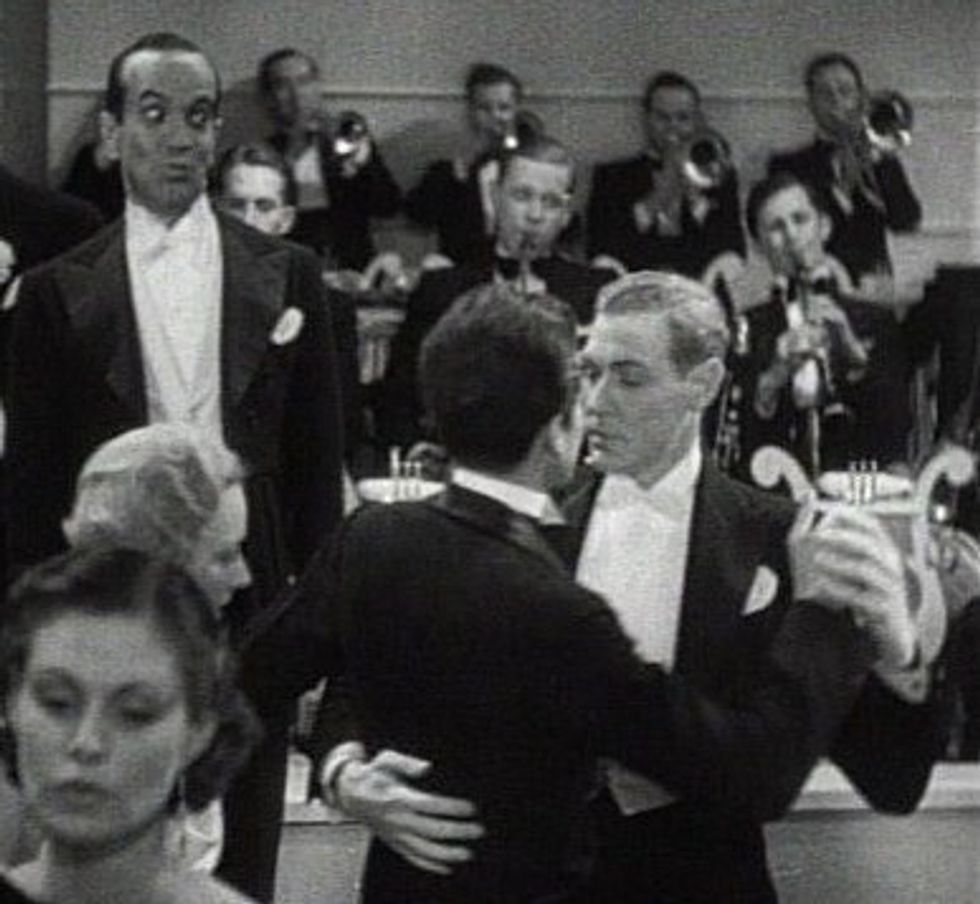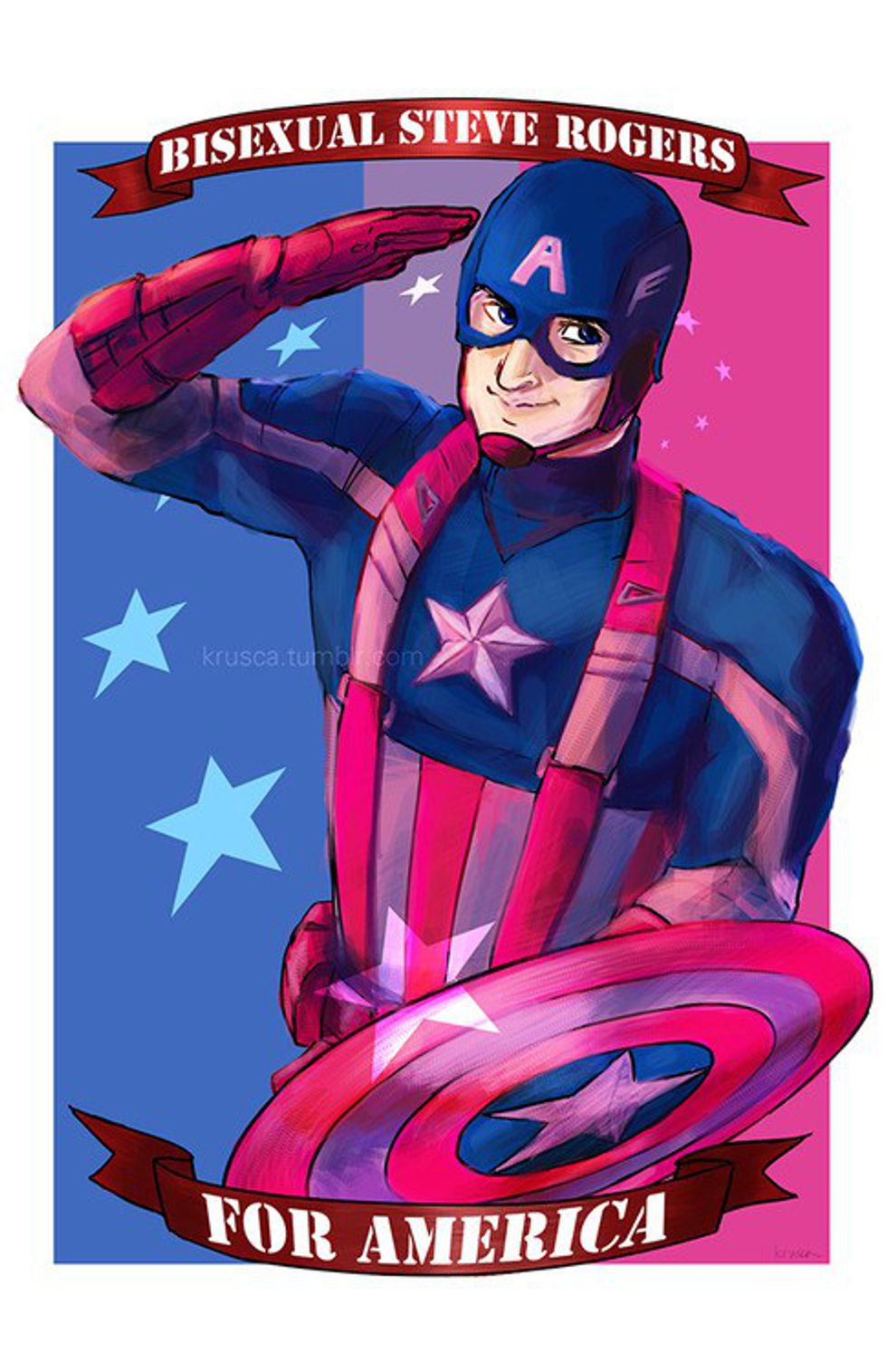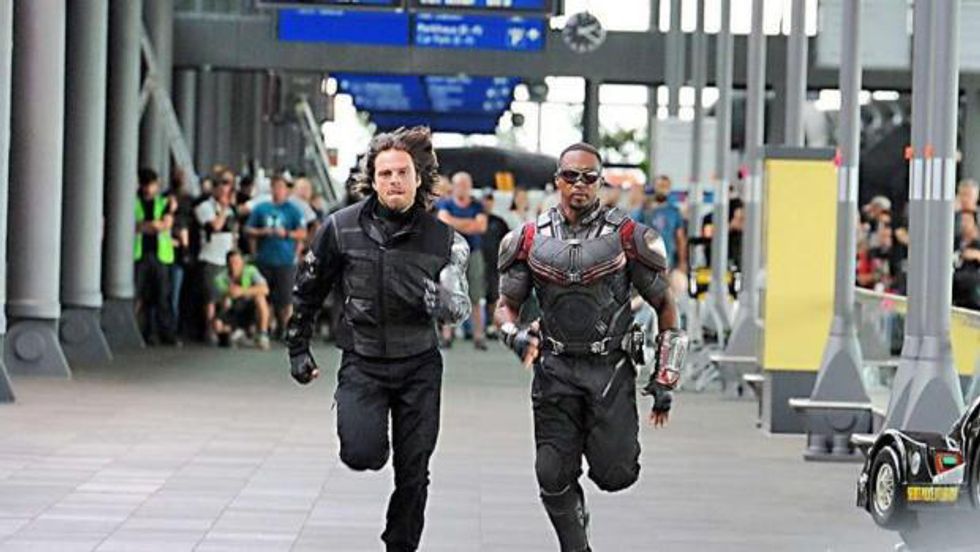If you've gone anywhere near Twitter or the Captain America fandom over the past few weeks, you've probably seen that strange hashtag trending. "Give Captain America a boyfriend? Isn't Steve Rogers the paragon of a straight macho man?"
What if I told you no? That not only did Steve Rogers canonically grow up in a historically gay neighborhood, but that an all-American beefcake like him could feasibly date a man without invalidating his previous relationships with women?
This is me, telling you no.
Despite an occasional foray into racism, Steve Rogers is generally portrayed as being a stand-up guy. In the 70s, one of his closest friends was a gay man. If we base his fictional life off of real history, there’s a good reason for his progressive views. In real life, the area of Brooklyn he would have grown up in had a visible gay population. Yes, in the 1920s and 30s!
A person who goes by the username “thingswithwings” on Dreamwidth did some research on gay neighborhoods in historical Brooklyn. They combined this information with details from both the Captain America comics and films to create a map of what they call “Mr. Rogers Gaybourhood.” They point out: "If you go with MCU [Marvel Cinematic Universe] canon, Steve's neighborhood is gay and very poor, very rough; if you go with 616 [comics] canon, Steve's neighborhood is gay and fairly poor, fairly rough and a bit more artsy."
"OK, Kirstin," you say. "So Captain America's neighborhood was gay. So what? Steve Rogers has still dated women.”
This is, until now, true. Steve Rogers has a particular attraction to women with the last name Carter (I won’t get into the weirdness of a man dating his ex-flame’s niece here). But there is a way in which Steve Rogers could be queer without invalidating his previous relationships with Peggy and Sharon: Bisexuality.
According to a study done by the Movement Advancement Project (MAP), BiNetUSA and the Bisexual Resource Center, about half of the United States’ 9 million LGB people are bisexual. Despite comprising such a large part of the queer population in America, bisexuals are often ostracized by straight people and other queer people. They’re stereotyped as being too greedy to choose one gender or the other. TV and film portray them as promiscuous.
I can say with some confidence that bisexuality does not equal promiscuity. I have dated both men and women—one at a time, monogamously. Steve Rogers’ bisexuality would not undermine his moral code. Growing up in a historically queer neighborhood would allow him to accept himself as a queer person. He would be confident in his morality.
Morality is why queer Steve Rogers is so important. Even people who have never seen his films or read his comics know that he’s a good man. If the ultimate superhero can be queer without losing his status as a hero, then arguments making queer people seem like villains unravel.
Steve Rogers being queer would validate the identities of so many queer people who look up to him. After all, Captain America is a symbol of America. Showing him as a queer person would be a fantastic metaphor for how the United States should embrace people of all orientations and identities. Being queer isn’t un-American. It’s proof of the diversity which modern America can represent.
If Marvel can’t bring themselves to make Steve Rogers queer—well, I won’t say that’s fine. But it doesn’t rule out having a queer Captain America. Bucky Barnes, Sam Wilson, I’m looking at you.






















